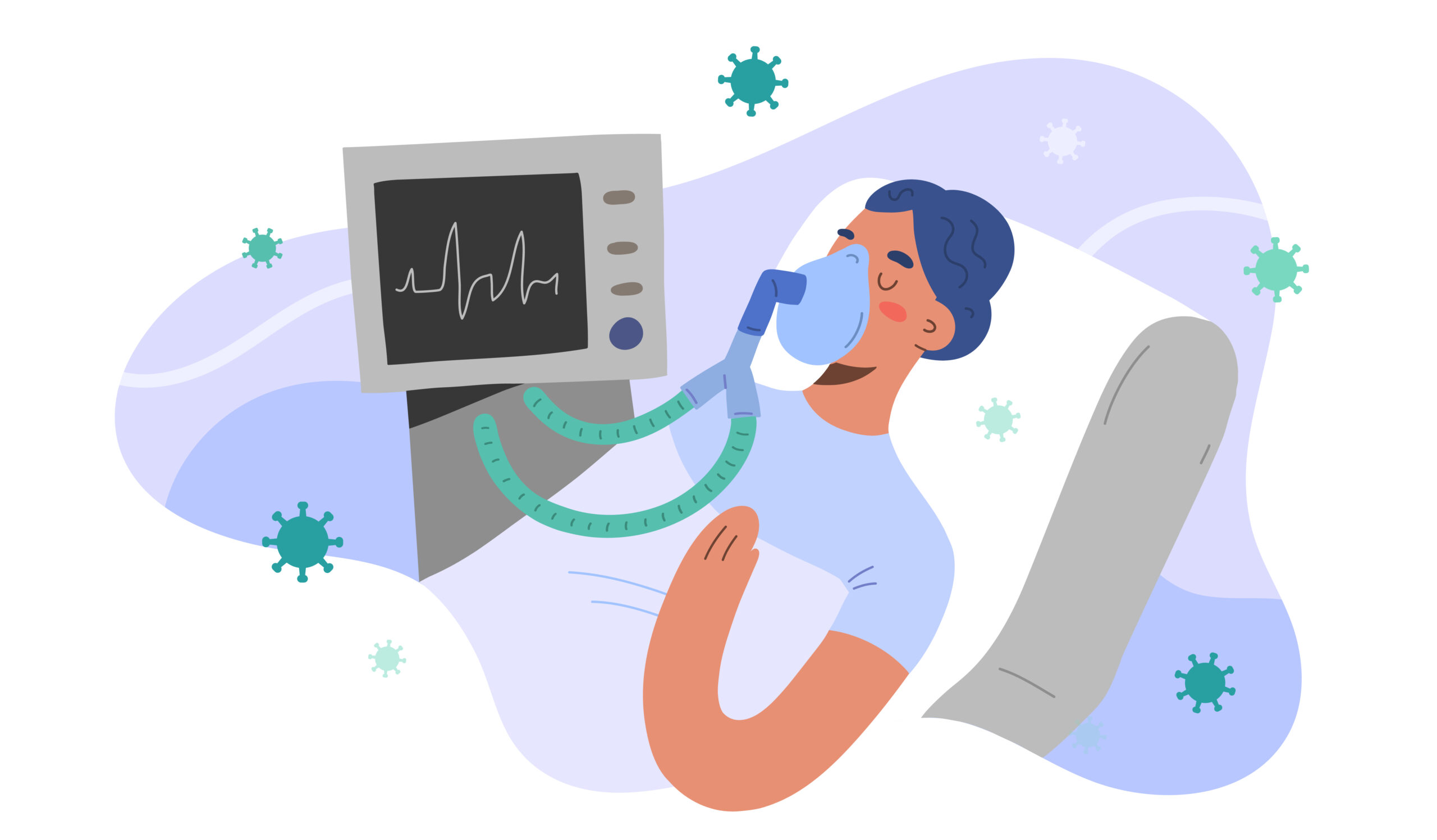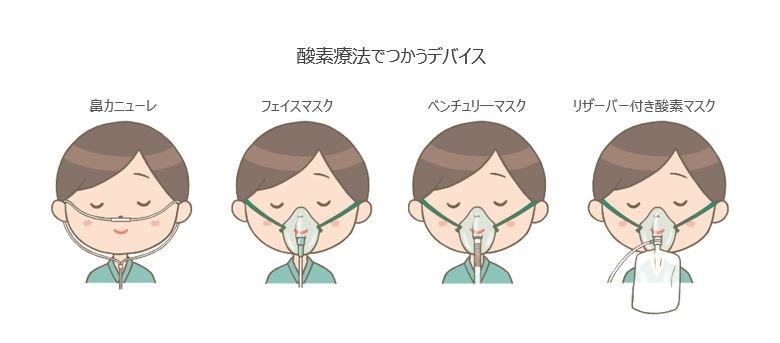ASOURCE®NAVI

公開日:2021.08.30
新型コロナウイルスの感染急拡大に伴い、医療体制が逼迫している地域では、中等症でも入院できずに自宅療養を余儀なくされるケースもみられるようです。ここでは、中等症II以降で行われる肺機能を補助または代替する療法についてまとめます。

新型コロナ患者がパルスオキシメーターで酸素飽和度が93%を下回ると、体内の酸素が少し不足している状態になり、酸素投与の適用となります。酸素濃縮装置や酸素ボンベなどから高濃度の酸素を吸入します。鼻にカニューレというチューブを通して肺に酸素を送り込みます。口が覆われていないため会話や飲食は可能です。ただし、加湿がないため、鼻の中が乾燥してしまうことがあります。さらに酸素飽和度が下がると、カニューレではなくフェイスマスクでの酸素投与となります。高い吸気酸素分圧を得るために酸素を貯留させておくバッグ(リザーバー)が付いているマスクもあり、効果的とされます。ベンチュリーマスクは、ベンチュリー管を酸素が流れるときに生じるジェット流周囲の陰圧状態を利用して、周囲の大気を取り込み、その量によって任意の酸素濃度を吸入することができます。酸素吸入が必要な中等症IIでも入院できない場合は、患者の自宅で酸素吸入できる在宅酸素療法(HOT)を始める自治体も出てきています。

看護roo!より引用
通常の酸素投与(3〜5L/分)でも酸素濃度が思うように上がらない場合は、次の策として人工呼吸器の装着が検討されますが、最近は、高流量鼻カニューレ酸素療法(ネーザルハイフロー)が用いられるケースが増えています。ネーザルハイフローはコロナ前から呼吸不全の患者に使われていましたが、去年春頃からヨーロッパをはじめ各国でコロナ治療に使われるようになりました。日本でも今年5月にこの治療法が「新型コロナウイルス感染症(COVID-19)の診療の手引き・第5.1版」に追加されました。カニューレよりも太いチューブから30〜60L/分以上の高流量で高濃度の酸素を供給できるデバイスです。鼻から加湿した酸素を肺に入れられることで、気道の粘膜が乾燥せず、炎症から守る効果もあります。ネーザルハイフローは、人工呼吸器が必要な段階になる前に、回復する機会をつくる手立てとなります。フランスの研究グループが昨年10月に米国胸部学会誌に報告した論文によると、新型コロナ患者約380例を対象にネーザルハイフローと通常の酸素療法の有効性を比較した研究では、ネーザルハイフローの使用により人工呼吸管理への移行を約20%減少させました。人工呼吸器と異なり患者の意識が保たれ、口が覆われていないため、会話や飲食が可能で、生活の質が維持しやすいとされます。医療スタッフの人員もあまりかからず、負担軽減につながります。欠点としては、患者の口からエアロゾルが発散され、院内感染をきたす懸念があります。このため、原則、陰圧個室で実施することが推奨されています。また、医療従事者の入室中は患者にサージカルマスクを着用してもらうことも感染回避のために有用といいます。なお、この装置は酸素ボンベでは稼働せず配管を要するため診療所や外来診察室での利用は難しいとされます。
酸素投与でも体内の酸素が不足している場合は、重症の定義にある人工呼吸器の装着となり、肺に出入りする空気の流れを補助させます。人工呼吸器は、患者の口から濃縮した酸素を送り込み、圧力によって肺を膨らませます。口から喉の奥まで管を入れるため、装着している間は麻酔をかけて意識のない状態にすることが多いようです。さらに、長期間管を通すと喉にむくみが出て痰が取りにくくなるため、喉を5センチほど切開してそこから直接管を通すこともあります。切開すれば患者は話せなくなります。寝たきり状態の患者を管理するため、経管栄養やオムツ交換などもあり、複数の医療スタッフが必要となります。
人工呼吸器でも肺機能をサポートしきれなくなったり、処置を継続することで肺に傷害を与える恐れがあるときは、最後の切り札といわれる体外式膜型人工肺(ECMO)の使用が検討されます。ECMOを使用すると、肺を休ませながら血液中に酸素を送ることができます。ECMO装着時も人工呼吸器同様に患者に麻酔をかけます。ポンプにより血液を取り出して、肺の代わりに人工肺で酸素と二酸化炭素の交換を行い、血液を体に戻すことで呼吸の補助をします。ECMOを使用すると血栓が発生しやすくなるため、抗凝固薬を使用します。24時間態勢で患者や装置のモニタリングなどが必要となり、ECMOに精通した医師、看護師、臨床工学技士など10人以上がチームとして対応しなければなりません。治療期間は数週間以上に及ぶこともあります。
新型コロナ患者の中等症II以降の呼吸管理の手段としてネーザルハイフローなど選択肢が増えましたが、感染者の急増が続くと、各種デバイスの確保が難しくなる恐れがあります。そのためにも感染の抑制が望まれるところです。
メディアスグループは、医療機器の販売を中心とした事業を展開しています。医療に携わる私たち(Medical+us)は、医療現場や人々の健康的な明日へ役立つ情報をお届けする情報発信源(Media)の役割も果たしていきたいと考えています。